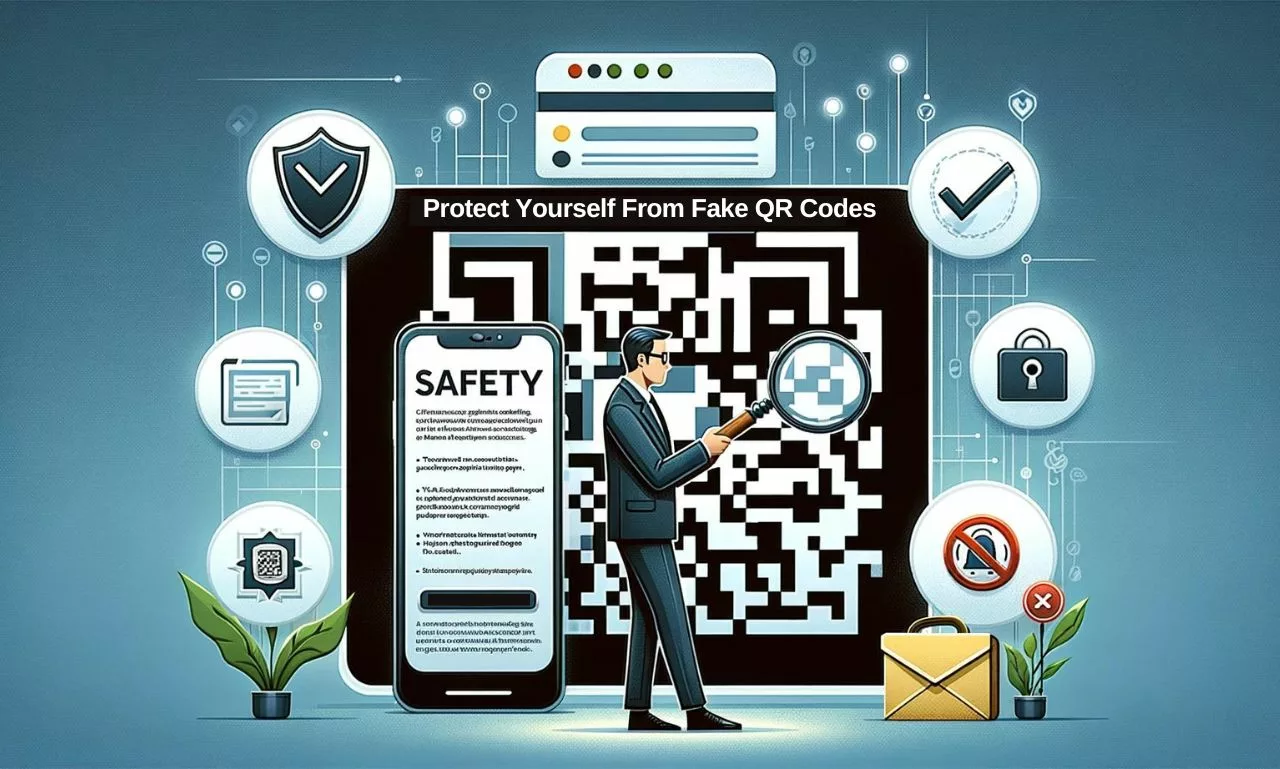In the age of rapid digitalization, Quick Response (QR) codes have become a ubiquitous tool for accessing information quickly and efficiently. From restaurant menus to payment gateways, QR codes are everywhere. However, this convenience also brings with it the risk of fake QR codes, designed to deceive users into downloading malware, sharing personal information, or unwittingly making payments to scammers. Protecting yourself from such malicious QR codes is crucial. Here’s a detailed guide on how to protect yourself from any fake QR Codes:
Table of Contents
Step 1: Be Cautious of the Source
- Verify the Source: Always ensure that the QR code is provided by a trusted and verifiable source. Be wary of QR codes found on public posters or flyers, as these can easily be tampered with by scammers.
- Look for Tampering: Physical QR codes (like those on flyers or posters) can be overlaid with stickers by scammers. Check for any signs of tampering or irregularities before scanning.
Step 2: Use Secure QR Scanning Apps
- Choose Wisely: Use a reputable QR scanning app that offers built-in security features, such as checking the URL for malicious content before opening it.
- Update Regularly: Ensure your QR scanning app is updated to the latest version to benefit from the most recent security enhancements.
Step 3: Inspect the Link Carefully
- Preview URLs: Use a QR scanner that allows you to preview the URL before opening it. This lets you verify the website’s legitimacy.
- Check for HTTPS: Ensure the URL begins with “https://”. The ‘s’ stands for secure, indicating that the website has SSL (Secure Sockets Layer) protection.
Step 4: Avoid Entering Sensitive Information
- Be Skeptical: If a QR code leads you to a form asking for personal or financial information, be cautious. Legitimate businesses rarely solicit such information through QR code scans.
- Use Official Apps: For transactions, use the business’s official app or website rather than inputting details through a QR code scan.
Step 5: Install Security Software on Your Device
- Comprehensive Protection: Ensure your device has up-to-date antivirus and anti-malware software to detect and prevent threats from malicious websites.
- Regular Scans: Perform regular scans on your device to detect and remove any potential threats.
Step 6: Report Suspicious QR Codes
- Notify Authorities: If you encounter a QR code that seems fraudulent, report it to the relevant authorities or platforms to prevent others from falling victim.
- Educate Others: Share your knowledge about QR code scams with friends and family to create a more informed and vigilant community.
Conclusion
By staying vigilant and adopting these protective measures, you can enjoy the convenience of QR codes without falling prey to the nefarious schemes of cybercriminals. Always remember that your digital safety starts with your actions and awareness. In the digital world, where new threats emerge constantly, staying informed and cautious is your best defense.
FAQs
Q1: What are fake QR codes?
Fake QR codes are maliciously crafted codes that resemble legitimate ones but are designed to deceive users into downloading malware, divulging personal information, or making payments to fraudsters.
Q2: How can I tell if a QR code is safe to scan?
Ensure the QR code comes from a trusted source, check for any signs of tampering, and use a secure QR scanning app that previews URLs and checks for malicious content.
Q3: What should I do if I encounter a suspicious QR code?
Avoid scanning it, report it to the relevant authorities, and inform others about it to prevent them from potentially falling victim to a scam.
Q4: Can scanning a QR code automatically download malware?
Yes, if the QR code is malicious and your device settings allow automatic downloads, scanning it could lead to malware being downloaded onto your device.
Q5: Is it safe to enter personal information after scanning a QR code?
Be cautious when entering personal information through forms accessed via QR codes. It’s safer to use official apps or websites for transactions or information sharing.
Q6: How can I enhance my device’s protection against malicious QR codes?
Install up-to-date antivirus and anti-malware software on your device, and ensure that your QR scanning app is equipped with security features to detect and block malicious links.
Q7: Are there specific apps recommended for secure QR code scanning?
While we do not endorse specific apps in this article, look for QR scanning apps with positive reviews, a good track record for security, and features that allow URL preview and security checks.
